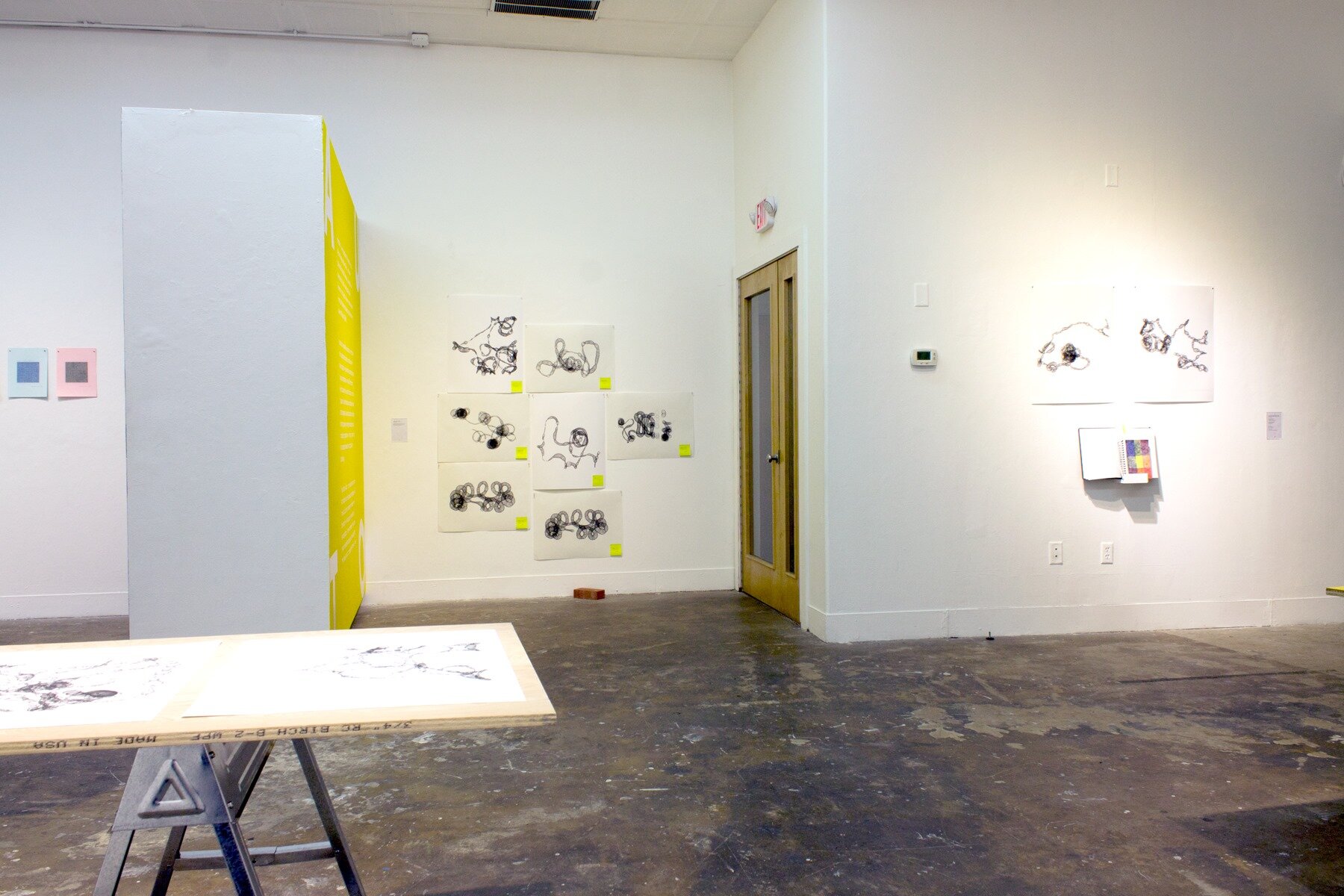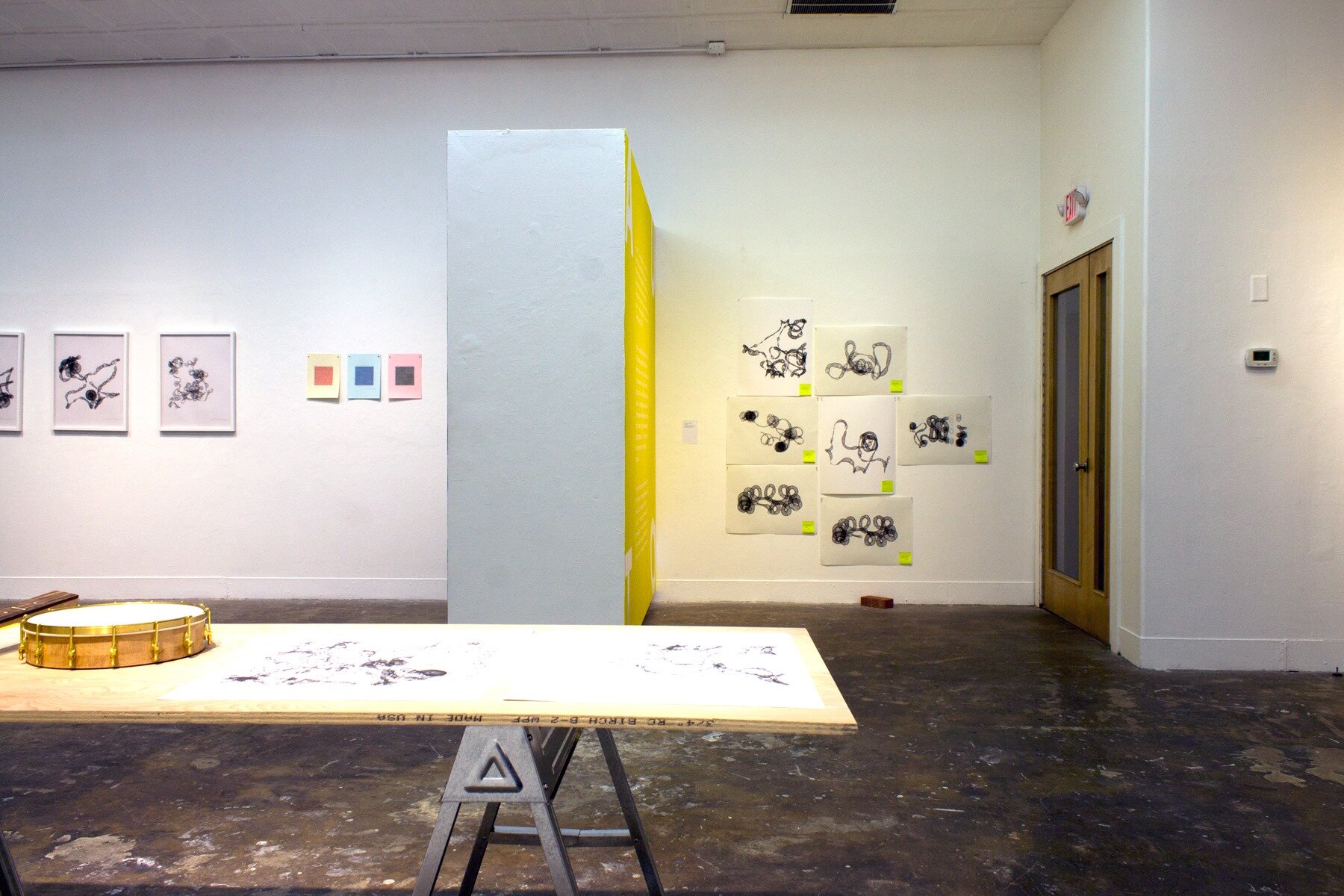AUTOMATIC: ART AND AUTHORSHIP IN AN AGE OF AUTOMATION: Andrew Sliwinski & Sarah Trahan
301 Gallery
AUTOMATIC is an exploration of the evolving role of technology as tool, medium, and active collaborator in artistic practice. Designed and developed by Sarah Trahan and Andrew Sliwinski, this collection of work centers around a series of drawings produced by the Automatic Drawing Machine (ADM).
Inspired by Surrealist Automatism in which the artist suppresses conscious control over the making process – allowing the unconscious mind to guide mark making – the ADM transforms electrical activity in an artist’s brain into marks on paper. These drawings are produced while artists engage in a range of practices including painting, drawing, writing, woodworking, and computer programming – forming a type of call and response between the artist and the technology.
The system utilizes a non-invasive brain sensing technology called Electroencephalography (EEG) as well as custom software to transform raw brain activity into a graphic representation. This representation is then transferred onto paper using a modified computer-controlled plotter that uses a pen to produce the drawings shown in the gallery.
About the artists:
Sarah Trahan is an artist and educator who is preoccupied with exploring the visual and physical structures inherent to textile construction and what happens when generative digital processes and handmade materiality intersect.
Sarah holds an MFA from Cranbrook Academy of Art and spent many years as a faculty member at the College for Creative Studies in Detroit, MI. Sarah and Andrew both served as founders and managing members of OmniCorpDetroit; a collectively run hackerspace that is still operational in the city's Eastern Market neighborhood.
Sarah is currently based in Cambridge, MA and serves as Assistant Professor and Digital Fabrication Studio Director at Montserrat College of Art in Beverly, MA.
Andrew Sliwinski is a research scientist with the Lifelong Kindergarten group at the MIT Media Lab. His research focuses on the intersection between learning, creativity, and technology.
Andrew serves as co-director of Scratch—an online community and tool for kids to explore their creativity through computing which reaches over two hundred million children every year. Prior to joining MIT, Andrew co-founded the learning community DIY.org and led learning research at the Mozilla Foundation.
As a designer and engineer, Andrew has worked with various organizations during his career including Google, LEGO, General Electric, Hewlett-Packard, Toyota, The Aspen Institute, and Code for America. His work as a creative technologist has been displayed in The Museum of Science & Industry in Chicago, The Museum of Modern Art in New York, and Carnegie Hall. His work has been profiled by Wired, The New York Times, and Fast Company.
Press:
A peek inside the college art scene in Beverly, Keith Powers, Wicked Local





































